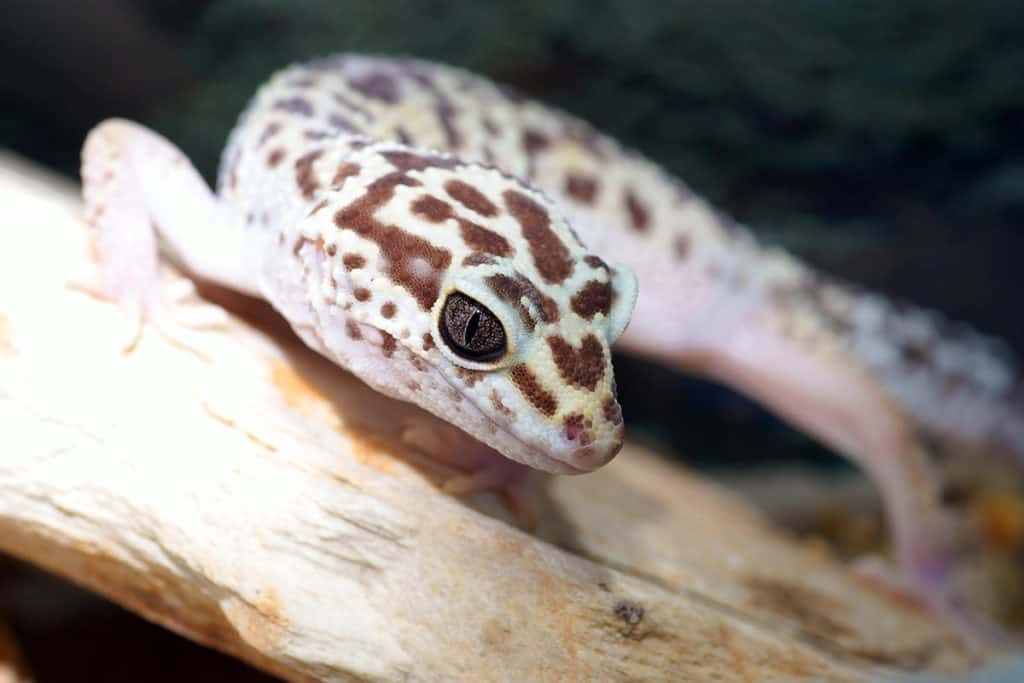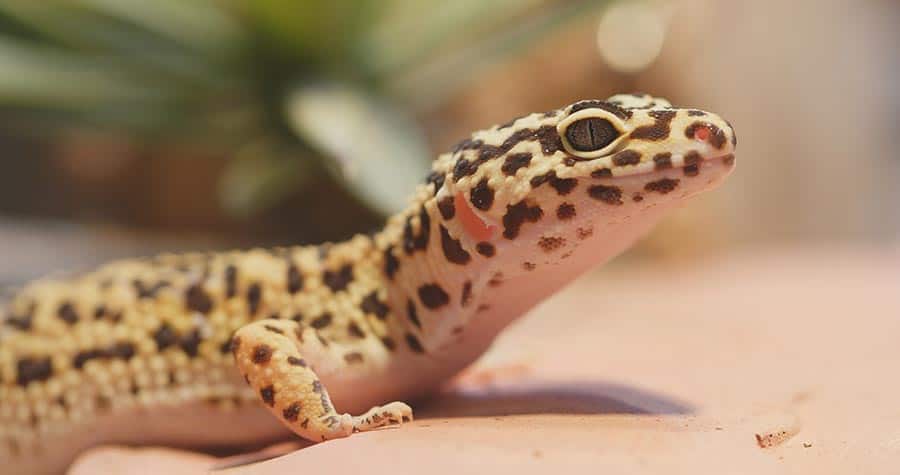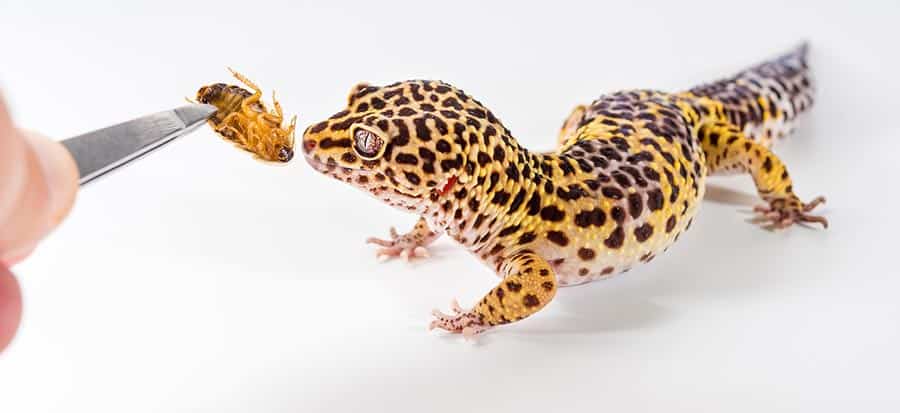When choosing a pet, you need to think about how long they live for. If you do not want a pet that’s going to be a long-term commitment, then getting something like an anole is a good move. However, if you are looking for a bit of a longer relationship, then a leopard gecko is just right for you!
Leopard geckos typically live for 10 to 20 years in captivity. However, there are many factors that can shorten or even extend their lifespans. For example, the sex of your leopard gecko will affect how long they live for on average. Their diet, genetics, and overall quality of care will obviously affect their life expectancy.
But there is another silent factor that can shorten your gecko’s lifespan: stress.
Read on to find out all of the details regarding the lifespan of leopard geckos and how you can ensure your gecko lives a long, happy life!
Average Leopard Gecko Lifespans
The average lifespan for leopard geckos is different whether they are male or female. This is the main factor that will determine how long any leopard gecko lives, and there are many key reasons why males and females have slightly different lifespans.
Be sure to determine the sex of your leopard gecko early on to get a better idea of their care needs as they age.
Female Leopard Geckos
Female leopard geckos will live shorter lives on average than males. This is quite common amongst geckos and other lizards. Generally, female geckos live for around 6 to 10 years.
The female leopard gecko lives a shorter life than her male counterpart primarily because she spends a huge amount of energy on producing eggs. Regardless of whether or not she has mated with a male, most female geckos will still produce clutches of eggs from time to time.
Egg production takes up a lot of nutrients, vitamins, minerals, and energy. It is also a fairly stressful experience for most geckos. After all, female geckos need to ensure their eggs get the best nutrients while they are developing so they have a good chance of survival once they hatch. This means much of the nutrients that she needs to maintain her body are going to her eggs.
However, if you avoid breeding your female, then she will not have to spend as much energy on egg production and can live on average 10 to 15 years! She may still lay eggs on occasion, but she will lay far less than if she were part of a breeding pair.
Male Leopard Geckos
Male leopard geckos typically live between 10 and 15 years, though some have lived as long as 20 years! Since they do not need to regularly spend massive amounts of energy on egg production, they are generally healthier and less stressed than females.
However, it is not a guarantee that just because you purchased a male leopard gecko that he will live very long. Many other factors can affect a gecko’s lifespan just as much as their sex, which is why you need to maintain good care practices throughout your leopard gecko’s lifespan.
How to Maximize Your Leopard Gecko’s Lifespan
To ensure your leopard gecko lives as long as possible, it is important to maintain good care practices (proper husbandry) for the full duration of their lifespan.
During the time that your leopard gecko is a juvenile, it is especially essential to provide them with excellent care. The quality of care they receive as a baby will have a huge impact on how long they will live and how healthy they will be as an adult. Most reptile owners opt to purchase their geckos as babies from reputable breeders who will have detailed information about the gecko’s morph and genetics.
There are also many adult leopard geckos looking for loving homes. Find out from the breeder or previous owner as much as you can about the care they received in the juvenile portion of their lives to help you predict how long they will live and what kind of supplementary care you can provide for them.
Regardless of your leo’s age, where you purchased them, or how long you’ve owned them, though, here are some care tips to ensure they live a long, happy, and healthy life.
Maintain a Clean and Healthy Habitat
The first step in ensuring your leopard gecko lives as long as possible is keeping it in a clean and healthy habitat.
Geckos make messes just like all other animals, and if they are made to live in their own filth, they will get sick. Various health issues caused by dirty enclosures such as respiratory infections or impaction will reduce their ultimate life expectancy. Their enclosures should be spot cleaned daily (or whenever you notice a mess), and they should be deep cleaned once a week.
There are three key aspects to a healthy, hygienic gecko habitat. Not maintaining these things properly can severely shorten leopard gecko lifespan.
Type of Substrate
Substrate is the “stuff” that goes in the bottom of your gecko’s enclosure.
There are many different kinds of substrate, such as reptile carpet,
Artificial substrates can contain chemicals that are harmful to your leopard gecko. Always check what the substrate is made of and look for chemical additives such as dyes or fertilizers.
Sandy or loose substrates increase the risk of impaction. Impaction happens when your gecko eats some of its substrate while it is eating its food or because it is bored or stressed. Impaction is a painful blockage of the gecko’s digestive tract and causes serious side effects if left untreated such as sepsis and even death.
Humid and Dry Hides
Every ideal leopard gecko habitat needs both a humid and dry hide. A hide is a spot for your gecko to seek shelter, such as a cave or a hollowed-out log.
A humid hide is essential for your gecko to have during shedding time. Leopard geckos need to have 60% humidity to shed properly. If they do not have the correct humidity settings in their enclosure, their skin can dry out and constrict their tails and toes. This condition is called dysecdysis and is also commonly known simply as “stuck shed”.
To create a humid hide, place an opaque container in the enclosure at the midpoint in the temperature gradient. The hide should be lined with damp sphagnum moss or damp paper towels that are changed every day. Misting the substrate inside the hide with water daily will help keep it moist.
Your leopard gecko will know how and when to use the hide to help it shed properly.
A dry hide, on the other hand, is fairly self-explanatory and doesn’t need much special maintenance or setup. Any structure that is dark, covered, and large enough for your gecko to fit inside comfortably can be used as a dry hide. Keep the dry hide on the opposite side of wherever you set up the humid hide.
Heating
Leopard geckos need a warm enclosure to thrive. The enclosure should not drop below 75°F at night. If your leopard gecko gets too cold, then they cannot thermoregulate properly. This means they can become constipated, stop eating, develop respiratory problems, and become lethargic.
If your gecko goes without proper heating for extended periods, their lifespan will be shortened due to the constant stress and energy they will exert trying to maintain their body temperature.
To create the perfect temperature gradient, you’ll need to install a
The basking spot should sit at around 90°F. The coolest side of the enclosure should not drop below 75°F during the day, but at night, it is safe for temps to drop to as low as 70 degrees.
Offer Your Gecko a Balanced Diet
Leopard geckos are insectivores. This means their entire diet is made up of live insects like crickets and worms. Leopard geckos should not be fed any fruits or vegetables. Their digestive systems are not developed to handle this kind of food.
Leopard geckos should primarily be fed staple feeder insects such as crickets, dubia roaches, and black soldier fly larvae (also known as Phoenix worms). Treat items can include waxworms, hornworms, and butterworms.
However, leopard geckos still need the vitamins and nutrients that come from those fruits and vegetables. This means their feeder insects need to be properly gut loaded before they are fed to your leo. Gut loading is simply feeding the insects vegetables that are high in vitamins and
For a more detailed breakdown on gecko diets, check out our article on what baby geckos eat!
Avoid Stressing Out Your Gecko
While most leopard gecko owners know to feed their gecko a healthy diet and house them in a correctly set up enclosure, most tend to overlook potential stressors. Stress is a huge factor when it comes to your gecko’s overall lifespan.
A stressed out gecko is usually an unhappy gecko, and unhappy geckos are often lethargic, prone to illness, and have low appetites. This is why it is so crucial to ensure your gecko is comfortable and happy in their enclosure.
Causes of Stress
Above all, leopard geckos need calm environments. If their environment is in a very busy part of your home, then they can become stressed by the constant activity. Keep their enclosure away from other pets or small children that may stress them out.
Additionally, their enclosure must have a regular photocycle of light hours and dark hours to mimic natural sunlight and nighttime. Without a proper day/night cycle, your gecko will become confused and upset.
Finally, rough handling and incorrect handling practices in general (such as grabbing them by the tail or squeezing them too tightly when holding them) can also hurt your leopard gecko or make it feel threatened.
Signs of Stress
Leopard geckos display certain behaviors when they are stressed that are very clear and easy to understand, even for novice reptile owners.
Here are the main signs of a stressed leopard gecko:
- Continuous chirping/vocalizing
- Tail raising and twisting
- Biting
- Running from you when you open the enclosure or approach them
- Tail dropping
- Continuous hissing
- Lack of appetite
- Sudden weight loss
Dealing with Stress
If you suspect your leopard gecko is stressed out, here are some tips to make them feel more safe and at ease and maximize their lifespan.
- If you are handling your gecko and they start to squirm or try to bite you, put it back in its enclosure.
- Check your gecko’s enclosure’s temperature settings to make sure your gecko is comfortable.
- Check on your lighting timers (if applicable) to make sure they are cycling properly.
- Remember to change their water dish daily.
- Check their tails and toes to see if there is a stuck piece of shed or if the skin is constricted and causing them pain.
- If the enclosure is next to a window, your gecko could be seeing birds and cats all the time (predators). Move the tank to a different place or put up a screen so your gecko can’t see outside.
If the stressed behavior continues, you should take your gecko to the vet, as they might be sick or even have a parasite infestation.
FAQs on the Leopard Gecko’s Lifespan
What is the maximum age for a leopard gecko?
The oldest leopard gecko on record lived to be 28 years old! This is an extreme case, however, it is not that rare for males to make it to just over 20 years old. Most leos, regardless of their sex, live roughly 8 to 12 years, with males living slightly longer than females.
How do I tell how old my leopard gecko is?
Baby and juvenile geckos (0 to 3 months old) have solid black horizontal bands on their tails and bodies.
As your leopard gecko becomes a subadult (3 months old), the black bands will start breaking up into large splotches. Once your leopard gecko is an adult (between 1 and 3 years old), the black bands will become small, uneven “leopard” spots along their tail.
Will the size of the enclosure impact my leopard gecko’s lifespan?
If the enclosure is too small (less than 30 gallons for an adult or less than 10 gallons for a baby/juvenile), then it will restrict your leopard gecko’s physical development, which will shorten its lifespan. However, if the enclosure is too big and sparse then it can also cause your gecko stress and overwhelm them, which can shorten its lifespan, too.
Do all geckos live as long as leopard geckos?
Geckos live for different lengths of time depending on what species they are. Check out our article on how long geckos live.
Scurrying Off…
Leopard geckos live for long enough that you could get one as a birthday present as a teenager and show it off to your children one day! These are long-term commitment pets, and you need to be prepared for that responsibility when you bring one into your home.
Leopard geckos are amazing reptiles to have because they are hardy and very forgiving of first-time reptile owners’ mistakes.
Provide them with a clean and healthy habitat, feed them properly, and monitor their stress levels carefully, and you will have a leopard gecko that lives between 10 and 20 years!




